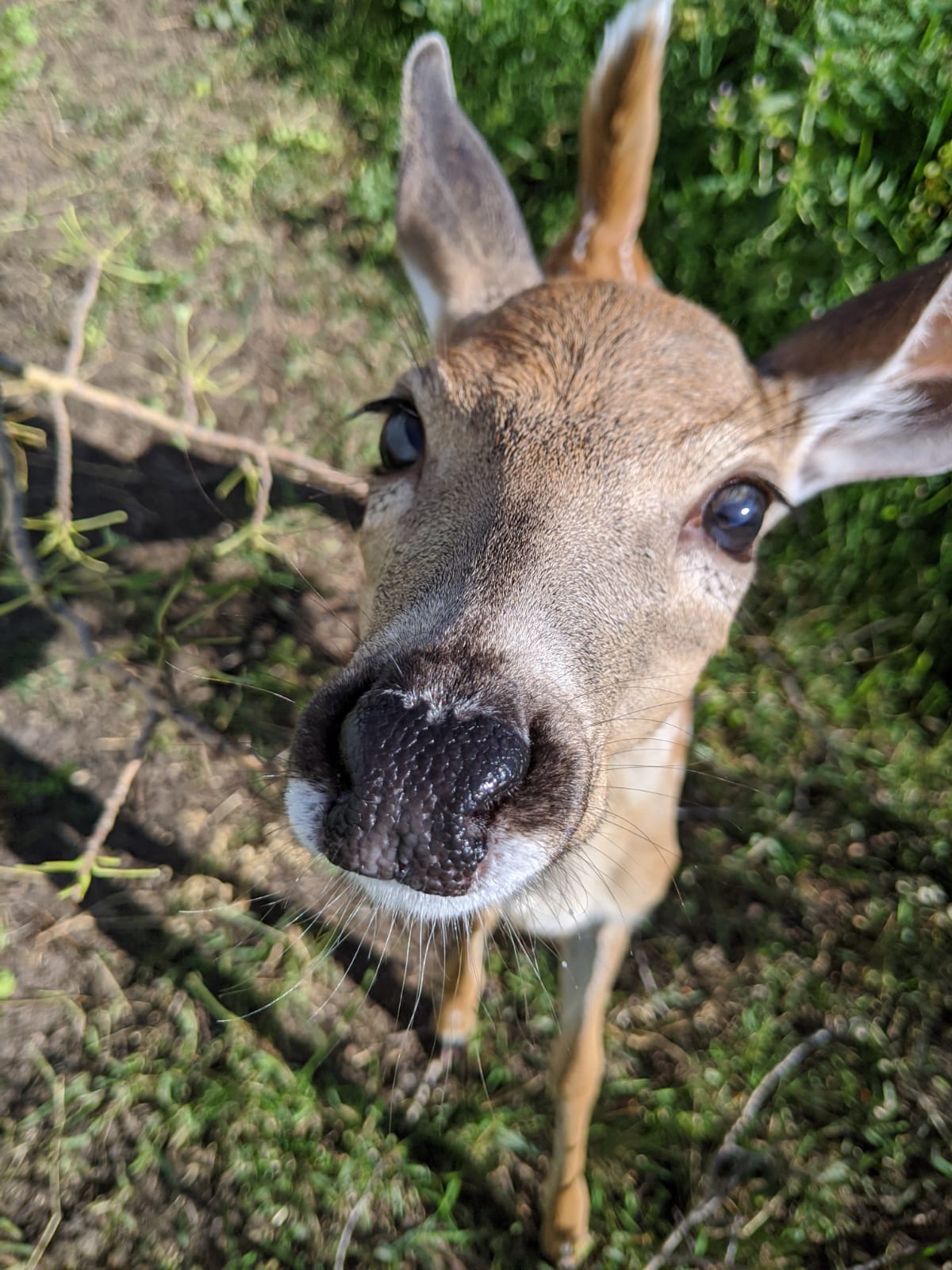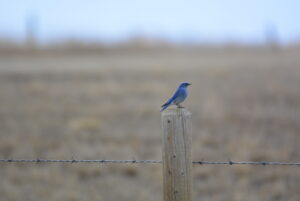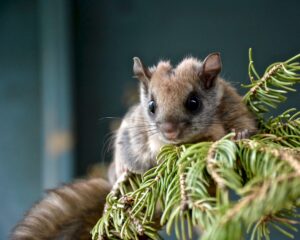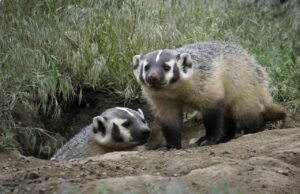By Maureen Perry
“Report??” shouts the captain, “The ship just cloaked off our port stern! “Can you identify them?…. she retracts . “They re-cloaked…that disrupter blast had a Klingon signature!”.
Star Trek Voyager – Prophecy – Episode 14 – Season 7
In this quote, the crew of the Starship Voyager encounters an enemy Klingon ship which is completely invisible to their sensors. An excellent way for the Klingons to stay hidden while roaming the universe being bad guys!

Baby deer and hares have something in common with those sci-fi villains – they possess a cloaking device to protect them from harm!
Fawns and hares have very little/no scent, which leaves them virtually invisible to predators. Unlike the characters from Star Trek, the predators of these babies see primarily by sense of smell rather than sight. They see with their nose, not their eyes.
Hidden Deer Fawns
Alberta is fortunate to have both white tailed and mule deer, and their babies have several predator avoidance strategies
- No scent: Fawns are born essentially odorless, as their scent glands are not well developed yet. Their mother (doe) stays away from her babies and returns only to nurse and lead them to new beds. She repeats this every few days so that her scent does not transfer onto the fawn, which would put him at risk of being discovered by predators. Still-nursing fawns stay hidden during the day among trees and bushes for three or four weeks. Once they are weaned, they begin following their mothers and stay with her for their first year.
- Odor removal: When the fawn is born the doe licks it clean, removing odors that a predator might be drawn to. In addition to this, she may also consume the fawn’s droppings to remove any sign of the fawn’s presence.
- Hide and separate the family: After the fawn can stand and walk which happens a few hours after birth, the mom moves her baby to a new hiding place. If she has twins, she will hide them in separate places and go back and forth to nurse each one.
- No sound and movement: Fawns normally don’t make noises except for infrequent bleating when in distress. When the fawn lets out a bleat, mom will usually come rapidly to the aid of her baby. When a fawn detects danger he will remain perfectly still – yet another simple but effective predator avoidance strategy.
- Camouflage: Fawns can have over several hundred spots on their coat which is first rate camouflage as these spots blend well with their surrounding environment. After the fawn is weaned, their spots fade.
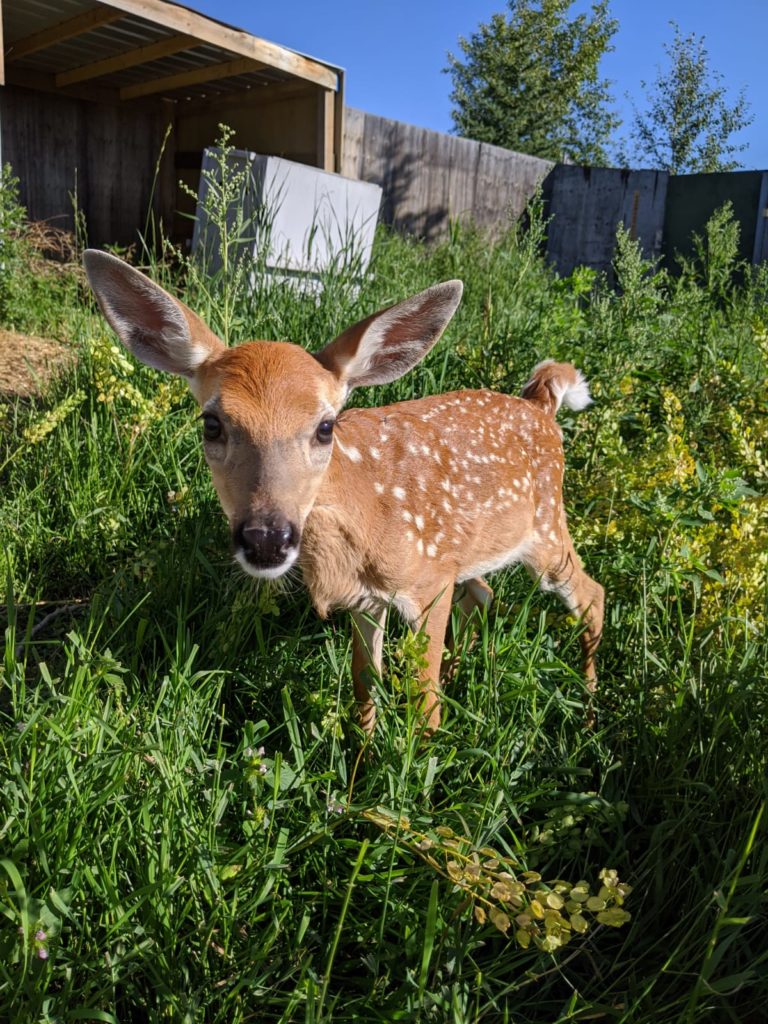
Fawns that live past the first week have a good chance of surviving to adulthood. By two or three weeks old they begin to graze, and month or so later fawns will start dining on tree seedlings. By mid-summer the fawn is able to outrun most predators while following mom closely.
Invisible Rabbits and Hares
Cottontail rabbits, snowshoe hares and white-tailed jackrabbits all call Alberta their home. As with fawns, rabbits and hares also have several very impressive predator avoidance strategies.
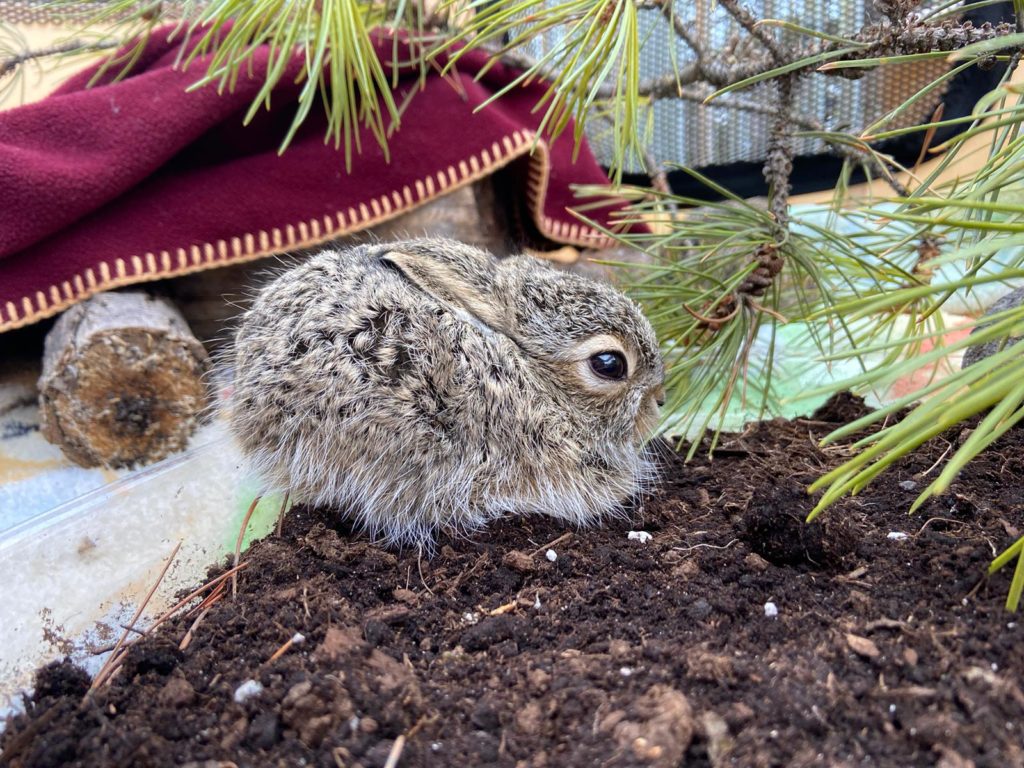
- Left alone: Baby hares are left alone by their mother since her presence near them would attract predators and to further deter predators, their mom returns only twice a day to feed and groom her baby. Hares don`t have nests, instead they distribute their babies out over an area ensuring they are well hidden.
- No scent: Baby hares do not have a scent but adult hares do. The mother hare stays away from her babies so predators are not attracted to her scent. At night the mom is most active while she nurses her young and forages for food for herself.
- Freezing in place: Baby hares have an instinctual defense of freezing in place when danger is near concealing them from any predator that may be in the area.
- Camouflage: The baby hare’s fur is natural camouflage and is very useful in protecting them from predators as seen in picture above.
- Born fully developed (precocial): A mother hare’s pregnancy lasts forty-two days and babies are born covered with hair and have open eyes. These newborn hares are called leverets and are precocial which means they are fully developed at birth.
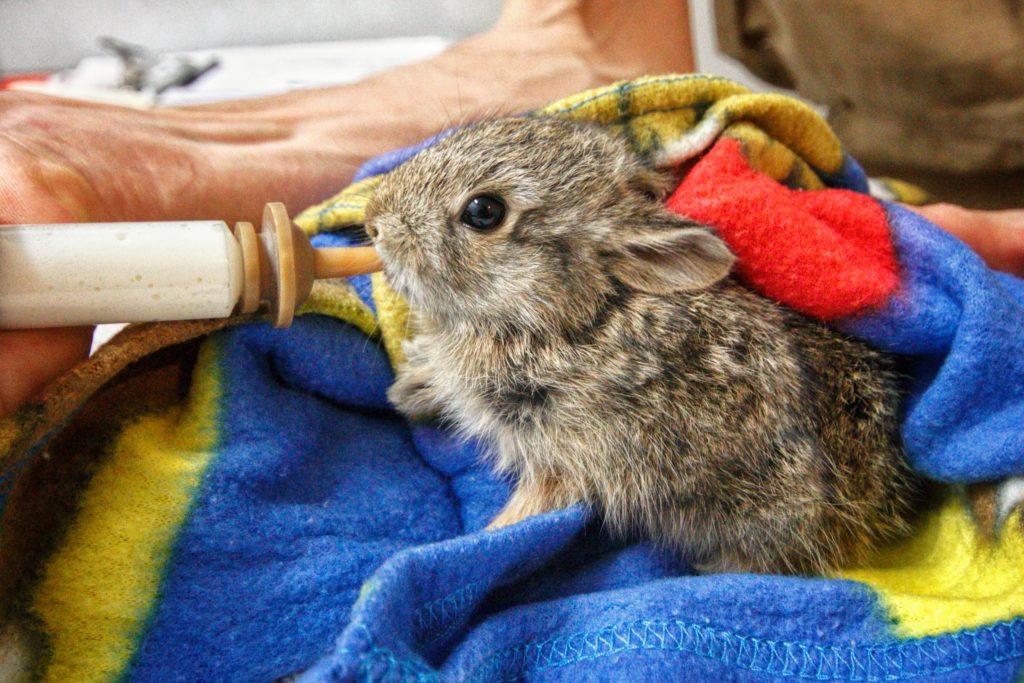
Back on the Star Ship Enterprise zooming through space, the captain is scratching his head in disbelief trying to figure out where those fawns and baby hares are hiding. Under some bushes or boughs of a tree? “Those darn cloaking devices!” he exclaims.
Although this sci-fi scene is not in any way accurate, nature does have excellent defenses for fawns and baby hares to protect them against bad guys (maybe not Klingons!). These baby animals pull this off without any modern sci-fi technology or a cell phone app.
2021 is not over yet. Perhaps an invisible cloaking app is on the way!
References
Alberta Animal Health Source, n.d. “Wild baby hares and proper handling”. Accessed June 10, 2021. https://www.albertaanimalhealthsource.ca/content/wild-baby-hares-and-proper-handling
Animalia, n.d. “Mule Deer”. Accessed June 10, 2021. https://www.animalia.bio/mule-deer
Carter, Lou. 2020. “Will rabbits come back to a disturbed nest?”. Rabbit Care Tips. Accessed June 9 2021. https://www.rabbitcaretips.com/will-rabbits-come-back-to-a-disturbed-nest
Edmonton and Area Land Trust, 2018. “Fun Facts: Rabbit or Hare?”. Accessed June 10, 2021. https://www.ealt.ca/blog/fun-facts-rabbit-or-hare
Government of Alberta, n.d. “Human-wildlife conflict – Rabbits and hares.” Accessed June 10, 2021. https://www.alberta.ca/rabbits-and-hares.aspx
NDA Staff, 2019. “Five common myths about Whitetail fawns”. National Deer Association. Accessed June 9, 2021. https://www.deerassociation.com/5-common-myths-whitetail-fawns
Northern Woodlands, n.d. “Fawns hide in pain sight”. Accessed June 9, 2021. https://www.northernwoodlands.org/outside_story/article/fawns
The Whitetail Deer, n.d. “Spotting” Whitetail Deer Fawns”. Accessed June 10, 2021. https://www.the-whitetail-deer.com/whitetail-deer-fawns.html

